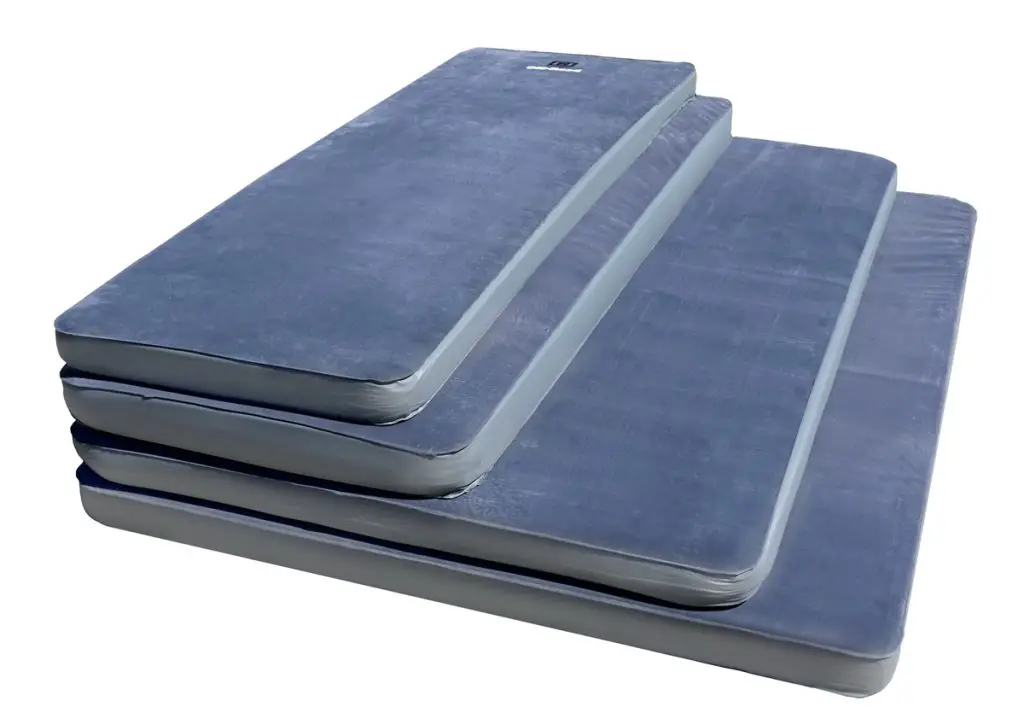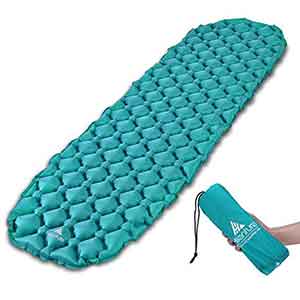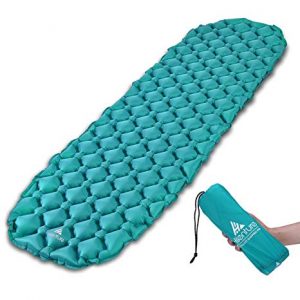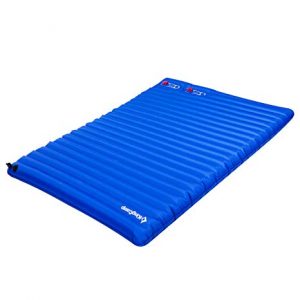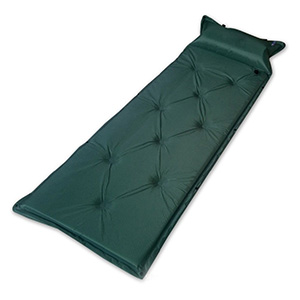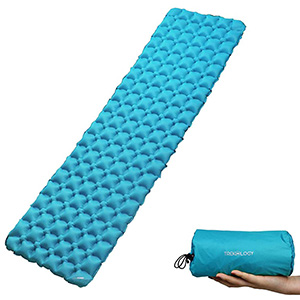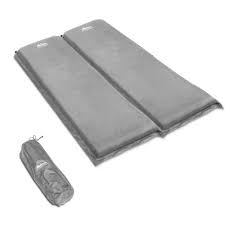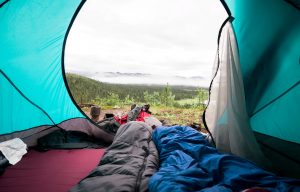
Choosing a Camping Mattress: Australia 2025
It’s fulfilling to get closer to nature by spending some quality time away from the house. Camping is one of those activities that will motivate, entertain, and rejuvenate your energy. It is associated with fun and adventure, so when you go for it, you can expect the best.
However, something that may seem negligible can ruin your adventure. Have you ever tried sleeping on cold, hard, bumpy dirt? This feeling can ruin your camping experience when you don’t have the right camping mattress. A low-quality mattress that exposes you to cold and floor pressure is equally irritating and uncomfortable.
So, what factors do you need to consider when buying a camping mattress? Keep reading to learn the intricacies of choosing a high-quality camping mattress.
The Basics
Before you go out there to buy a camping mattress, there are several questions you should ask yourself. Where will you be camping? How is the terrain? How is the weather? How many are sleeping on it? For how long will you be camping?
Generally, you must look for:
- A thick mattress for comfort
- A mattress that is well-insulated to keep cold nights warm
- A lightweight mattress
Size Matters!
The size of a mattress determines the quality of your sleep. Do not just buy the first cheap camping mat you find.
Always take your height and body size into consideration when shopping for a mattress. You need a mattress that is bigger than you and one that can withstand your weight. Don’t buy a mattress that will leave your feet hanging throughout the night.
It is recommended that you try out a mattress before buying it. Also, checking its specifications will help a great deal.
Ability to Park near camp and deploy the Mattress
How will you get to the camping site? Will you carry the mattress on your back or drive to the camping site?
These essential questions matter when buying a camping mattress. If you plan to drive to the campsite, weight should not be a significant issue. You can pack a heavy mattress because you don’t have to worry about carrying it
However, if your campsite requires hiking, a light camping mattress is a lifesaver. Most trekkers camp on a thin mattress due to its portability as they often also have to carry a hiking tent. Those who carry mattresses on their backs need to go for a lightweight product.
The construction is also a crucial factor. For hiking, portability is something you cannot overlook. You don’t want to spend more time constructing your sleeping place after a tiresome hike.
Resistance Value (R-value)
Thermal resistance against the ground and cold air is another critical factor )R-Value. You might spend several nights on the ground and in the cold. Even a thin foam mattress will provide a protective layer between you and the ground.
At Bright Camping, we recommend buying a mattress with high-resistance to avoid contact with the harsh air. Some mattresses come with a fabric cover specially designed to keep the body warm.
Ideally, the camping season should determine the R-value of your camping mattress. For winter and fall camping, you should go for a mattress with an R-value of 5. For summer, an R-value of 3 will work. In most cases, quality is directly proportional to price. This means that you are likely to pay more for a high R-value.
Mattress Inflation and Deflation
Considering that camping activities can be tiring, you need to preserve as much energy as you can. You should not use too much effort trying to inflate or deflate your mattress. When you go shopping, consider a mattress that is easy to pump air in and out of before buying it.
You can gauge this feature by reading customer reviews. Check the specs indicated on the packing box as well. Check whether you need to inflate it manually or not. It’s more advisable to buy a mattress that comes with a built-in pump or air valve.
The advancement in technology has seen the emergence of a wide range of self-inflating mattresses. Such mattresses have cell foam and air. The internal cell foam allows the mattress to self-inflate.
The other trick is using your car’s A/C adaptor as a charging source for pumping air into the mattress. A mattress pump will save you time and energy.
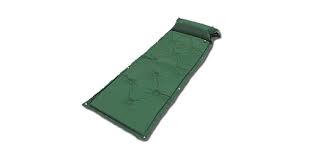
Types of Camping Mattress
Now that you know what to consider when buying the best camping mattress, you need to decide which one to buy. Camping mattresses come in different materials and designs. Here are some types that you should know:
Foam Pads
Other people refer to them as roll mats. These mattresses are suitable for trekkers who need to walk for several hours. These are light and can easily fit in your bag. All you do is unfold them, and everything is set. Worried about the price? These closed-cell foams are sturdy and cheap. It’s also worth noting that foam pads are often indestructible. Their downside is that they do not provide enough comfort and warmth. However, they are very reliable.
Self-Inflating Mats
These mattresses may be pricier than the rest. They have a layer of open-cell foam. The coating is covered with nylon. You can inflate them with several breaths. However, they can self-inflate themselves if the valve is left open. The good thing about these mattresses is that they are more comfortable and warmer than foam pads. Their setback is that they can easily get punctured.
Inflatable Air Mattresses
These mattresses provide the same functionality as an air bed. You need to inflate them with a pump. They are among the most comfortable, warmest, and thickest types of mattresses. Inflatable air mattresses are filled with fluff. However, they require more effort and time to inflate compared to the rest. The other setback is that they are the most expensive. They also become useless when punctured.
If a camping air mattress isn’t your style and you would like to try something different, then check out camping stretchers. The quality of stretchers on the market today has improved ten-fold. Check out our best camping stretcher reviews here
The Takeaway
You need to take the time to learn about different types of mattresses and their features before buying one. Now that you have gained enough knowledge about camping mattresses, there is no doubt that you will make a well-informed decision. Check the price of the best camping mattress on Bright Camping.
Common Camping Mattress FAQs
What to use as an alternative to an air mattress
There are many alternatives to air mattresses when camping. Foam & Air filled camping mattresses are a great option along with:
- Camping stretchers
- Foam rollout / sleep pad
- Hammock
- Blankets
How thick should a camping mattress be?
The ideal thickness range for sleeping pads used for camping is 2.5–3.5 inches. Because of the foam, a 3-inch self-inflating pad will be elevated from the ground, very stable, and offer a lot of insulation.
How Do Sleeping Pads Keep You Warm?
Although there is a complicated scientific explanation for this, the average hiker or camper doesn’t need to be aware of it. A layer is generally created by sleeping pads between your back and the ground that keeps you warm. Your back is toasty compared to the chilly earth. Even if you’re bundled up in a warm sleeping bag, if you’re resting directly on the ground, the coldness will permeate the warmth of your back and cool you off overall.
Although the pad itself does a modest bit of heating, the air inside the pad actually does the bulk of the job. Because they contain more air, air pads and self-inflating pads provide greater warmth than closed-cell foam.
Having said that, air does contribute to insulation, but too much of it can be harmful. It can get extremely cold if you sleep on a large, more conventional air mattress (that inflates with a pump). In this instance, there is too much air.
Sleeping pad R Value is the primary metric for evaluating all of this.
How wide should a couples sleeping mattress be?
Couples sleeping pads must be brought up in a discussion on sleeping pad width. These are twice as wide as regular sleeping pads but are the same length. In some situations, couples pads come in widths of 40 inches, 50 inches, and 52 inches.
These are excellent choices for couples who know they’ll be sleeping together on almost every trip because they can both slightly cut weight (in comparison to two separate pads) and significantly improve the comfort of sharing a bed.
Despite this, few hikers carry a couple’s pad. You’re not always sleeping next to another person, and the sleeping area is significantly larger.

